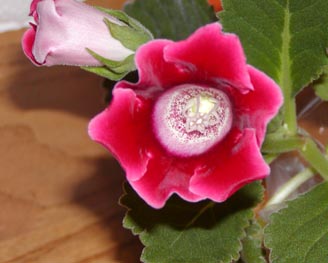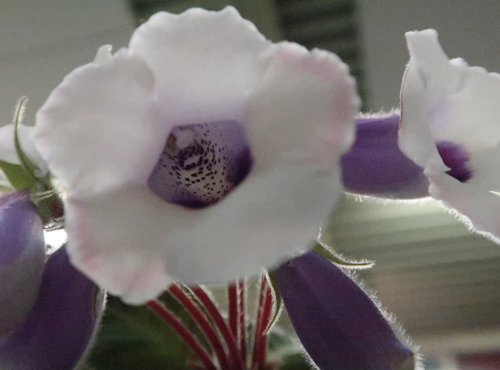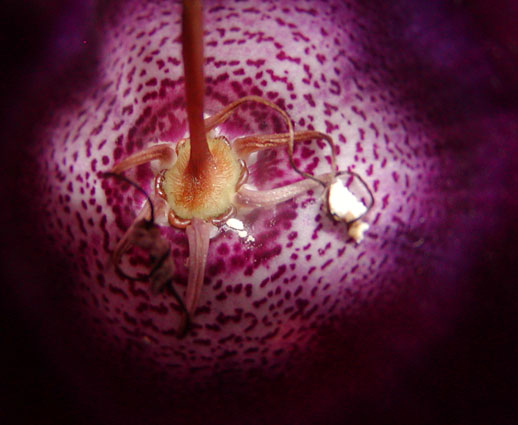|
The species was first described as
Gloxinia speciosa by Conrad Loddiges in
1817 -- and what a naming muddle that has caused!
William Philip Hiern published it as
Sinningia speciosa in 1877.
Two other published species, S. discolor
and S. regina, have been
reduced to varieties of S. speciosa.
In fairness to Mr. Loddiges, it should be pointed out that a
number of other species we now call sinningias
(e.g. S. tubiflora and
S. hirsuta)
were originally published as Gloxinia species
(see the chronology),
without causing any confusion in later years.
So we have the "florist gloxinia" and live with it.
Etymology: Latin speciosa ("handsome").
The species epithet presumably does not invoke the secondary meaning of
speciosus, namely "attractive but false" (whence the English "specious").
speciosus derives from the Latin root
spec, having to do with seeing, the same root
underlying the species name conspicua -- and the word species itself.
|


